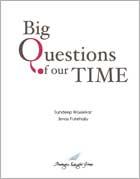Hungry China Goes Shopping?
|
|
March, 2011
By
|
The severe drought being witnessed in north and northeastern China has become a concern for global markets. With almost a third of China�€™s wheat fields affected, the Food and Agriculture Organization (FAO) has declared the drought a �€˜food emergency�€™. Even if China does not need to turn to international markets to counter the effects of this drought, it is probable that it will have to do so in the next decade.
China is the world�€™s largest wheat producing and wheat consuming country. Most of its wheat belt, comprising Henan, Shandong, Anhui, Jiangsu and Hubei provinces, has not seen rain since September 2010, making this drought the worst in almost a hundred years. Approximately 12.5 million acres of winter wheat crop have been damaged and scientists fear that the drought may affect the summer wheat crop as well.
Historically, droughts and famines have not boded well for the parties in power in China. They have even toppled governments. Aware of this reality, the Chinese government has a stringent food policy in place that involves maintaining large reserves of food grains to tide over such natural impediments to food security. This has so far shielded the Chinese domestic grain market from global fluctuations. Food is a matter of national security in China and its food policy has obviously been successful as it has been managed to feed almost 22% of the world�€™s population on 9% of its arable land.
The current drought has led the Chinese government to initiate some measures. It has committed USD 1 billion to fight the devastation caused by the drought. It has commenced the digging of 1350 emergency wells and the construction of irrigation infrastructure. The government is also giving USD 334 million in emergency relief aid to farmers. It is continuing its cloud-seeding programme. At present, the Chinese government is doing all it can to reassure people that it has sufficient reserves to minimize the damage caused by the drought and that it is taking effective measures to guarantee irrigation facilities for the future.
Despite all the speculation surrounding the future impact of the drought in China�€™s bread basket, it is unlikely that China would have to turn to the international grain markets in the next few months. The exact size of China�€™s wheat reserves is not known but FAO estimates it at about 55 million tons. This is more than a third of its annual harvest and would easily tide over the country for the time being. Furthermore, over 95% of the precipitation in northern China occurs from March through November. Hence, there are chances that the drought conditions may improve in the next couple of months and the wheat production for this year may not be affected to the degree being currently projected.
However, it is important to note that droughts have become more frequent in China as a result of climate change. In the 1950s, droughts occurred once every 5 years; in the 1990s, once every 2 years and for the past 10 years, droughts have occurred almost every year in China. The Ministry of Science and Technology has recently launched a 5-year programme to protect crops that will be introduced to 500,000 hectares of farmland and will include drought-resistant crops. As the climate changes, China is likely to see more of both droughts and floods in the coming years.
While the Chinese government is taking the effects of climate change into consideration when planning for the future, it is not certain how these steps will measure up to the increasing phenomenon of severe droughts. Problems like desertification, land loss and severe water shortage that afflict the North China Plain only complicate the case and all this does not bode well for China�€™s long-term agricultural production. The emergency relief measures taken by the government at times like these, including digging of deeper wells, will only exacerbate the groundwater shortage problem in this area in the future. If the situation worsens over the next decade, there are chances of China witnessing frequent grain shortages and being eventually forced to buy from international markets more and more.
The next few years may also see a recurrence of flooding and droughts in other major grain exporting nations like Australia, Canada, Russia and Argentina. Hence, frequent grain shortages in China would impact the entire world as the global market will struggle to meet China�€™s demand and prices could be driven upwards. Furthermore, as China will be able to bid for and pay higher prices for grain, some of the poorer nations would have to turn to other alternatives including food aid to fulfill their demand for grain.
Also, the question is whether such agricultural shortages in China and the resulting price hike will lead to social and political unrest in China as well as other parts of the world, especially in the poorer nations. In China, the possibility of protests over this issue in the next few months is rare. But in the long-term, China has cause for worry.
Related Publications
-
.jpg&maxw=50)
Big Questions of Our time: The World Speaks, 2016
Download:Big Questions of Our time: The World Speaks _Full Report
-

-

Second Freedom South Asian Challenge 2005-2025, 2005
read more
Download:Second Freedom South Asian Challenge 2005-2025 Full Report
Related latest News
Related Conferences Reports
-

Global Challenges Conference, October 2016
Download:Global Challenges Conference Report
-

Conference on Responsibility to the Future: Business, Peace and Sustainability, June, 2008
Download:Global Security and Economy: Emerging Issues


